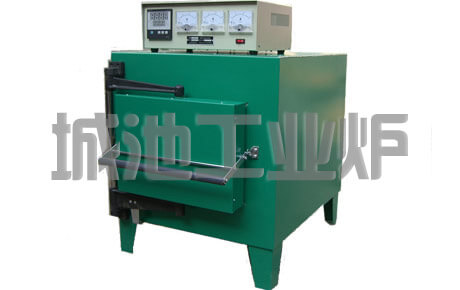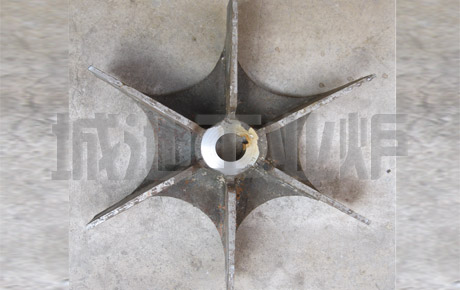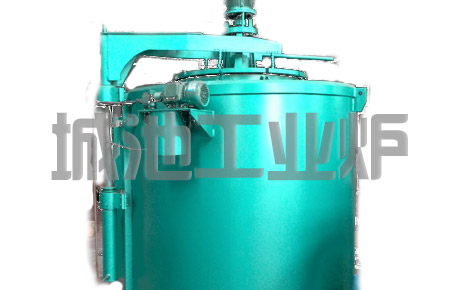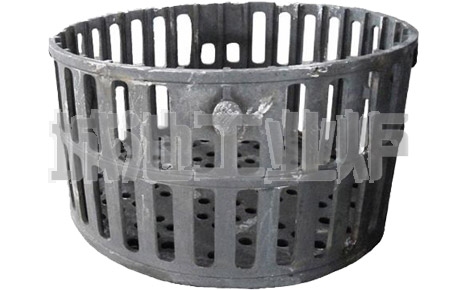Vacuum infiltration zinc furnace
Vacuum infiltration zinc furnace
Vacuum infiltration zinc furnace Compared to vacuum carburizing furnace zinc is by heating Zn Fe atomic interdiffusion and uniform Zn Fe alloy layer of surface protection technology is formed on the surface of iron and steel, so in the produ
Abstract
- Promulgator: :industrial furnace
- Send date:2015-08-02 16:58
Keywords:Vacuum infiltration furnace zinc,Infiltration zinc furnace,zi
Vacuum infiltration zinc furnace
Compared to vacuum carburizing furnace zinc is by heating Zn Fe atomic interdiffusion and uniform Zn Fe alloy layer of surface protection technology is formed on the surface of iron and steel, so in the production process of reduced zinc oxide, thereby reducing the amount of zinc, greatly reduces the permeability of the cost of zinc, and hot dip galvanizing zinc consumption is roughly 1 / 3 of the hot dip galvanizing, multicomponent alloy carbonitriding vacuum infiltration process technology of zinc and development. Widely used in the fields of electricity, communications, construction, railway, highway, shipbuilding industry, petroleum chemical industry, plumbing, hardware etc., such as: railway bridge bearing plates off the beam pre embedded steel plate, box girder contact net support embedded parts, solid high strength bolt, ordinary fasteners, crossarm, tower, non-standard fittings, electric porcelain base, metal pipes, hardware parts, malleable steel scaffolding, spike, motor scooter, highway fence, chain.
Main characteristics of vacuum infiltration zinc furnace:
1, vacuum infiltration furnace zinc is implemented under the vacuum condition. Therefore, it reduce or avoid the infiltration of zinc in zinc oxide powder, while reducing the zinc powder dosage (only 20-30% of the hot dip galvanizing), greatly reduces the permeability of zinc cost, small vacuum sherardizing of Zn Fe alloy layer with iron potential difference, corrosion rate is smaller than that of the pure zinc layer, as an anode protective layer, sherardizing layer has strong corrosion effect, so the same thickness of sherardizing layer than electro galvanized, hot galvanized surface pure zinc coating time long.
2, hot galvanized coating and the substrate is metallurgical combination and poor steel matrix adhesion, coating over 80um, galvanized by the impact, is extremely easy to occur peeling of the coating, and the infiltration of zinc process of Zn Fe alloy diffusion layer is metallurgical combination, infiltration layer over 100um, and the surface hardness is high, strong adhesion, in the process of handling by the impact also won't appear layer peeling. Carburized layer after the treatment effect is good, and combination of the composite layer, layer can not without any treatment directly painted, coated or coated polymer bonding force heat dip zinc high grade 3-4, binding capacity reached the national standard level.
3, compared with the hot galvanized, hot galvanized steel has the additional clearance, coating thickness is difficult to control, regardless of the "over gauge" (coating thickness) is easy to appear to reduce the role of fasteners, tolerance and the problem has not been resolved, and the vacuum infiltration of zinc, the thickness of the 15 ~ 100um range between 30 ~ 50um no additional space, completely solve the problem of fastener tolerances, improve the fastening effect. Infiltration layer appearance of smooth, smooth, overcome the uneven phenomenon of hot dip galvanized metal tumor, burr and thickness, even by percolation pieces after infiltration not without any treatment, is also very beautiful.
4, released in the process of hot dip galvanized zinc vapor air pollution, "shooting" splash of high temperature molten zinc threat to human safety and vacuum infiltration of zinc is in a closed container, the complete elimination of the zinc vapor on the atmospheric pollution, thoroughly put an end to the history of operation personnel zinc vapour poisoning and high temperature liquid zinc burns.
5, the thickness of the 50um layer is more than 20 years of corrosion resistance, the infiltration of the surface layer, the inner layer also has certain anti-corrosion ability, so its corrosion resistance is higher than that of hot galvanized. (hot dip galvanized standard: plating thickness is greater than or equal to 5mm, the zinc layer thickness should be no less than 86um, its corrosion resistance of 10 to 15 years, in fact, due to the packaging of the process of the collision and air pollution, after hot galvanized steel products used for 8 years, that is, the need for brush paint anti-corrosion treatment.
6, vacuum infiltration compared to zinc and other metal elements diffusion method, processing temperature (360-419 DEG C) below the phase transition temperature of steel, avoid the temperature sensitive area of steel, does not change the microstructure and mechanical properties of the substrate material, not hot galvanizing embrittlement effect, proved after infiltration of tensile strength, yield strength will work improved, avoiding the high strength steel, spring steel, alloy steel caused by annealing decreased strength and spring in the hot dip galvanizing, zinc surface, infiltration layer hardness and wear resistance is higher (hardness than galvanized nearly doubled), and no hydrogen embrittlement, the complex components, either thread, or the inner wall of the groove, the thickness is almost the same, some not easy hot galvanized material (high strength steel, spring steel, white cast iron) can be used in zinc treatment. The ultra long full tooth screw has the characteristic of small deformation and can guarantee the mechanical properties of the material, and the hot dip galvanizing can not meet the above requirements.
7, has a very high temperature antioxidant capacity. 600 degrees in the surface intact, avoid high temperature and hot galvanized bolt "killed" if reached 600 degrees all surface oxidation.
8, due to the hot zinc plating on the environment, and therefore can not build the city. The vacuum infiltration of zinc is carried out in a closed container, production safety, good labor conditions. No harm to human health, to the environment without pollution, avoid the hot dip galvanizing process in zinc vapor poisoning, high temperature operation, splash of liquid zinc, environmental pollution and other shortcomings. Comply with the requirements of the environmental protection department, the urban area can be set up factories, thereby reducing the transportation costs.
Technical parameters of vacuum infiltration furnace 1:
Technical parameters of vacuum infiltration furnace 2:
| Model | SXD72-5 | SXD108-5 | SXD150-5 | SXD220-5 | SXD280-5 |
| Rated power KW | 72 | 108 | 150 | 220 | 280 |
| Rated voltage V | 380 | 380 | 380 | 380 | 380 |
| Rated temperature ℃ | 420 | 420 | 420 | 420 | 420 |
| Phase | 3 | 3 | 3 | 3 | 3 |
| heating area | 2 | 2 | 3 | 4 | 4 |
| Furnace chamber size | 600X2500 | 700X3500 | 800X4500 | 900X6000 | 900X7000 |
| Furnace capacity (iron) | 1.4 | 2 | 4.5 | 6 | 7 |
| Vacuum degree Pa | (1-3)*133 | (1-3)*133 | (1-3)*133 | (1-3)*133 | (1-3)*133 |
| Outline dimensions | 3500X1158X1430 | 4500X1158X1430 | 5500X1470X1512 | 7000X1470X1512 | 8000X1470X1512 |
| Weight t | 4.5 | 8.5 | 16 | 24 | 30 |
Technical parameters of vacuum infiltration furnace 2:
| Model | SXD135-5 | SXD190-5 | SXD240-5 | SXD330-5 | SXD395-5 |
| Rated power KW | 135 | 190 | 240 | 330 | 395 |
| Rated voltage V | 380 | 380 | 380 | 380 | 380 |
| Heating temperature ℃ | 460 | 460 | 460 | 460 | 460 |
| Phase | 3 | 3 | 3 | 3 | 3 |
| heating area | 2 | 2 | 3 | 4 | 4 |
| Furnace chamber size | 1100X2500 | 1100X3500 | 1100X4500 | 1100X6000 | 1100X7000 |
| Furnace capacity (iron) | 2.5 | 3.3 | 4.2 | 5.8 | 6.6 |
| Vacuum degree Pa | 150~350 | 150~350 | 150~350 | 150~350 | 150~350 |
| Outline dimensions | 3500X1600X1700 | 4500X1600X1700 | 5500X1800X1700 | 7000X1800X1700 | 8000X1800X1700 |
| Weight t | 7.5 | 11 | 16 | 20 | 26 |
More Vacuum infiltration zinc furnace:http://www.industrial-furnace.com/industrialfurnaces/Atmosphere_Furnace/infiltration_zinc_furnace.html






